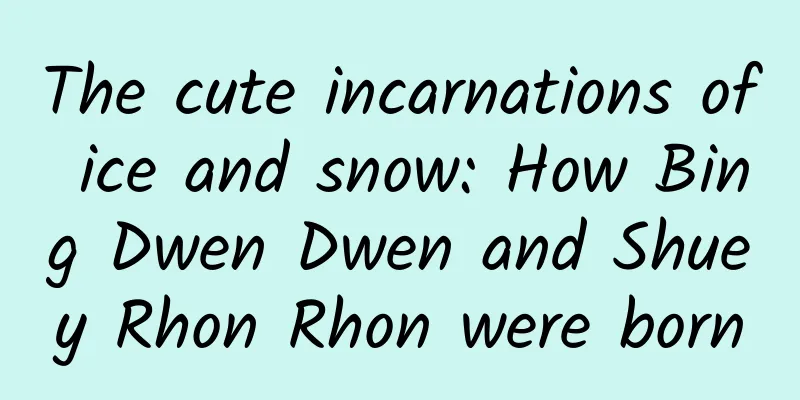Purple dye, an accident, opened an era

|
A magical story about medicine, waste, scientists, businessmen, nobles, marine life and guano, revealing the mystery of chemistry like a complex compound. Written by | Snow The 2021 Nobel Prize in Chemistry was awarded to asymmetric organocatalysis, leading many people to exclaim that the Nobel Prize in Science has finally returned to authentic chemistry. Regarding organic synthesis, we tell an interesting story: mankind’s first synthetic dye, purple (mauveine), came from an accidental discovery. Coal tar products In 1856, 18-year-old British youth William Henry Perkin tried to synthesize quinine from coal tar in his home's crude laboratory. At that time, quinine was the only way to treat malaria, and it was ridiculously expensive because it was made by grinding the bark of the cinchona tree in tropical areas (hence it was also called cinchona cream). Perkin, left, when he was 14 years old. 丨Image source: sciencehistory.org On the other hand, coal tar was cheap. Coal tar was a byproduct of the gas that lit up Victorian nightlife (Fun fact: coal tar is a Class I carcinogen, but it is also used as a drug ingredient). At the time, the common practice was to dump the remaining coal tar into nearby rivers. August Wilhelm von Hofmann, a German chemist at the Royal College of Chemistry in London, studied coal tar in depth, which is one of his most famous works. Von Hofmann knew that coal tar contained elements such as carbon, hydrogen and nitrogen, and had great potential for the synthesis of amino compounds. Quinine is an alkaline amine (containing an amino group), which von Hofmann speculated could be formed by combining two naphthylamine molecules and a water molecule, and von Hofmann had already extracted and synthesized a number of amines from coal tar. As von Hoffmann's assistant, Perkin wanted to impress his teacher, so he tried to synthesize quinine himself. He failed. In an experiment to synthesize quinine, Perkin used potassium dichromate to oxidize aniline extracted from coal tar, which left a layer of black viscous substance in the flask. Quinine should be colorless. Perkin used alcohol to clean it, and saw a beautiful purple solution in the flask. He realized that some kind of chemical reaction must have occurred, but his goal was still quinine. Later experiments found that this purple solution easily stained the fabric of clothes and was not easy to wash. He recorded that this purple color "resisted the action of atmosphere, light, and soap." In fact, the key ingredient of the purple solution is Mauveine, which is the world's first synthetic dye. This was a pure accidental discovery. Not only was the purpose different, but he later found that aniline had been contaminated by toluidine. The two substances were oxidized together to produce purple substances. The original aniline purple dye was produced in 1906 to celebrate Platinum's discovery of the purple dye method. 丨Image source: The Board of Trustees of the Science Museum Shawls dyed using the Perkin method exhibited at the 1862 International Exhibition | Image source: blog.sciencemuseum.org.uk A silk skirt dyed using the Perkin method | Image source: blog.sciencemuseum.org.uk Perkin quickly applied for a patent, and immediately asked his father to invest, and he and his brother opened a factory to commercialize the dye. This extraordinary business acumen did not come out of thin air. Perkin lived in an area where manufacturing was concentrated, and there was a textile printing and dyeing workshop next to his house. He saw that purple clothes were popular in the 1850s. Beauty-loving ladies were obsessed with this beautiful color. Queen Eugenie, the wife of Napoleon III, became a fashion trend leader because of her purple silk dress. Perkin also changed the name of this color to French Mauve, which originally meant purple mallow. In May 1857, a business partner of Perkin wrote to congratulate him, saying, "Your color has set off a wave of enthusiasm among the most powerful women." The advent of the fashion trend also depends on another major feature of aniline purple: cheapness. More importantly, Perkin's work laid the foundation for the organic chemical industry. This color associated with wealth not only came to ordinary people's homes, but also entered the colorful world. Because of the development of the organic chemical industry, even if purple is no longer popular, textile dyeing has made great progress. Maybe sometimes chemical products are considered to have some negative connotations, and people prefer natural ones. But medicines, explosives, plastics, fertilizers, etc., these chemical products are really necessary for us to leap into modern society. Aniline purple is the first of what is now called azo dyes, which is one of the earliest chemical products. Perkin (second from right) and his colleagues at the dye company. The second from the left is his brother. (They look like real brothers, but Perkin is actually the seventh child in the family.) | Image source: In fact, aniline purple is an extremely complex mixture. It was not until 1994 that scientists clearly analyzed two of its important structures; in 2008, two more important chromophores were discovered, bringing the total number of compounds to 12. In order to commemorate Perkin's contribution, the American Institute of Chemical Industry began to award the Perkin Medal on the 50th anniversary of the discovery of aniline violet in 1906. It is still the highest honor in the chemical industry, recognizing scientists who have "innovated in the field of applied chemistry and made breakthroughs in commercial development." Purple, born noble It is also worth mentioning here why purple is associated with nobility and wealth. Whether in China or abroad, purple is the color of the emperor and the royal family. For example, the Forbidden City in Beijing is called the Purple Forbidden City. There are also the terms "Purple Terrace" (where the emperor lives) and "Purple Edict" (the emperor's edict); "Purple Air Coming from the East" means that a saint has arrived, which is an auspicious sign. In the West, the rulers of the Byzantine Empire used purple as the royal color, and the queen had to give birth to a child in the Purple Room (in Chinese mythology, the emperor lived in the Purple Palace), so later on, "born in purple" was extended to indicate a noble family. The British royal family still uses purple as a ceremonial color for special occasions. The reason is that purple dyes are too rare. This common color in the spectrum is hard to find natural dyes on Earth. The earliest use of purple may be murals. Scientists have discovered purple left by humans painting with manganese-containing minerals in Neolithic caves. Around 1500-1200 BC, the Phoenicians first found a natural purple-red dye, called Tyrian purple or Phoenician purple (πορφύρα porphúra, referring to the famous Phoenician city of Tyre), which was extracted and processed from the mollusk (bone snail) in the conch. Archaeological evidence in recent years shows that it may have been first invented by the Minoans on the Greek island of Crete. But no matter who invented it, it cannot change the fact that natural purple dyes are difficult to obtain. The ancient Roman natural philosopher and naturalist Pliny the Elder recorded the production process in his Natural History. The process is very cumbersome and will emit a foul smell (there is also evidence of the foul smell. There are also murex in coastal areas of China. Han Feizi records that Duke Huan of Qi likes to wear purple and "I hate the smell of purple".) And it is obviously impossible to produce on a large scale - some scholars have calculated that only 1.4 grams of dye can be produced from 12,000 murex, which is only enough to decorate the edges of clothes. This color has therefore become a symbol of noble status. In fact, the color Perkin first discovered for him was called Tyrian purple, and in the fourth century AD only the Roman emperor could wear this color. In 301 AD, Diocletian's Edict on Maximum Prices recorded that a pound of silk dyed with conch shells sold for as much as 150,000 ancient Roman denarii, which some scholars have analyzed is equivalent to about $3 million in today's purchasing power. According to legend, Hercules, the ancient Greek mythologist, took his dog to court a fairy. As they walked on the beach, the dog bit a conch (a nautilus, not a murex), and its mouth was dyed purple. The fairy asked to dye a purple robe, which became the source of purple fuel. This picture is a work by artist Peter Paul Rubens, painted around 1636, and is now in the collection of the Prado Museum. 丨Image source: wiki Modern scholars have concluded that the organisms used by the locals are several types of murex (formerly known as Murex, now belonging to the Muricidae family) from the Mediterranean region, such as the dye murex (Bolinus brandaris) and the ring murex (Hexaplex trunculus), which are marine gastropods. The secret of purple comes from the sticky secretions of the dye murex, which are oxidized to produce 6,6'-dibromoindigo, which is the component that shows purple. 6,6'-Dibromoindigo丨Image source: wiki The fuel colors corresponding to different conchs. Image source: wiki Guano Changed the World Over time, clever people around the world found different natural sources of purple, such as lichens, cochineal, moss, blackberries, etc., and developed some synthetic dye technology. By the 1850s, although no longer so rare, purple was still a fashionable color. The purple dye source of Britain, the world's textile capital at the time, was Murexide (ammonium violaceous urate) in honor of the murex - after the crazy killing, the two murex mentioned above were almost extinct in the West. The British extracted it from guano, and the guano was imported. In the early 19th century, Alexander von Humboldt, a great German scientist and explorer, discovered the fertilizer value of sea guano (Guano) during his expedition in Peru - rich in nitrogen, phosphorus and potassium. The dry natural environment made the guano here the best. He brought this discovery back to Europe, and soon Europeans knew about this treasure. Peru also discovered business opportunities, and the country prospered for a period of time because of guano. If we go a little further, guano had an important impact on capital expansion in the mid-19th century, and Spain even lost a war because of it. The Peruvian coast in the 19th century | Image source: leganerd.com Guano fertilizer poster | Image source: climateandcapitalism.com As for why people thought of extracting dyes from bird droppings, we have to mention von Hoffmann's teacher. Von Hoffmann's teacher Justus von Liebig (the father of the fertilizer industry) and another German chemist Friedrich Wöhler (famous for the artificial synthesis of urea) obtained ammonium violurate (they were not the first to discover this compound) in their research on urea in the 1830s, and found that it could dye wool. Their raw material was snake droppings, and dyes were also a by-product of their research on fertilizers. There is also a small episode to mention. The Royal Chemical Institute in London, England (originally proposed by Liebig) was very interested in imported guano. They had received a lot of funding from agriculture and hoped to improve agricultural production. However, the researchers did not get any valuable information, so they fell into an economic crisis and merged into the Royal School of Mines in 1853, now the Department of Chemistry of Imperial College London. When guano began to be imported into Europe, changes occurred in agriculture, textiles, and fashion. French manufacturers purchased purple dyes from guano, and then Britain and Germany began to use ammonium violet for dyeing. However, this dye did not work well in London, which was seriously polluted, and it easily faded after reacting with sulfur. Perkin's aniline purple was better and cheaper, and quickly broke the monopoly. Later, the exploration of colors allowed people to wear aniline red, aniline blue, etc., and von Hofmann also created Hofmann's Violet... Their appearance made purple no longer popular, but the organic chemical industry had changed the world. References [1] https://en.wikipedia.org/wiki/William_Henry_Perkin [2] https://de.wikipedia.org/wiki/August_Wilhelm_von_Hofmann [3] https://blogs.bl.uk/science/2017/07/william-perkin-and-mauveine.html [4] https://en.wikipedia.org/wiki/Purple [5] https://daily.jstor.org/the-accidental-invention-of-the-color-mauve/ [6] https://en.wikipedia.org/wiki/Tyrian_purple [7] https://www.jstor.org/stable/24877711 [8] https://cuphistory.net/history-of-purple/ |
>>: Science and Technology News | Scientists discover "invisible version" of Omicron virus
Recommend
337 billion US dollars! Report says that by 2025, 5G mobile phones will account for more than 50% of smartphone sales revenue
A new study from Juniper Research found that 5G-c...
Unable to afford traffic, entrepreneurs face life and death every day!
Buying traffic has become a game that is no longe...
After studying 10 big Douyin accounts, I found 8 Douyin promotion routines
Brother Xian has been feeling rather depressed la...
Is Baidu bidding easy to do now? How to do Baidu bidding well?
Both large and medium-sized enterprises and some ...
2021 Jiankun University English Listening Comprehension Class
2021 Jiankun University English Listening Compreh...
How do core user communities operate? Share 2 tips!
The design, improvement and promotion of products...
How to attract traffic to Tik Tok? How to attract traffic on TikTok?
Tik Tok short videos have almost swept across the...
11 Essential HTML5 Animation Tools
[[155716]] Nowadays, the most popular language in...
Practical Tips | 360oCPC product interpretation and optimization methods
In advertising, high conversion costs, small conv...
Lu Songsong’s Blog: How can website SEO surpass your competitors?
1. Whether it is optimized or not, you can see it...
Physical examination = illness? No physical examination = no illness? Is it necessary to have a physical examination to prevent cancer? Let's find out all at once!
gossip A healthy person was found to have cancer ...
Will this small step for Miaopai be a big step for short videos?
It is extremely difficult to find some irrelevant...
How should product operations build a user recall system?
A product is like a traffic pool, with fresh bloo...
Masks finally have national standards
The reporter recently learned from the launching ...
New discovery of the Webb telescope: directly "seeing" galaxy formation
In the May 24, 2024 issue of Science magazine, an...









